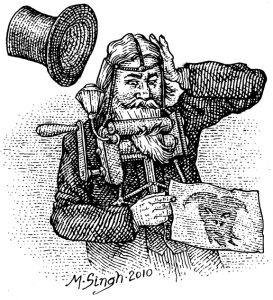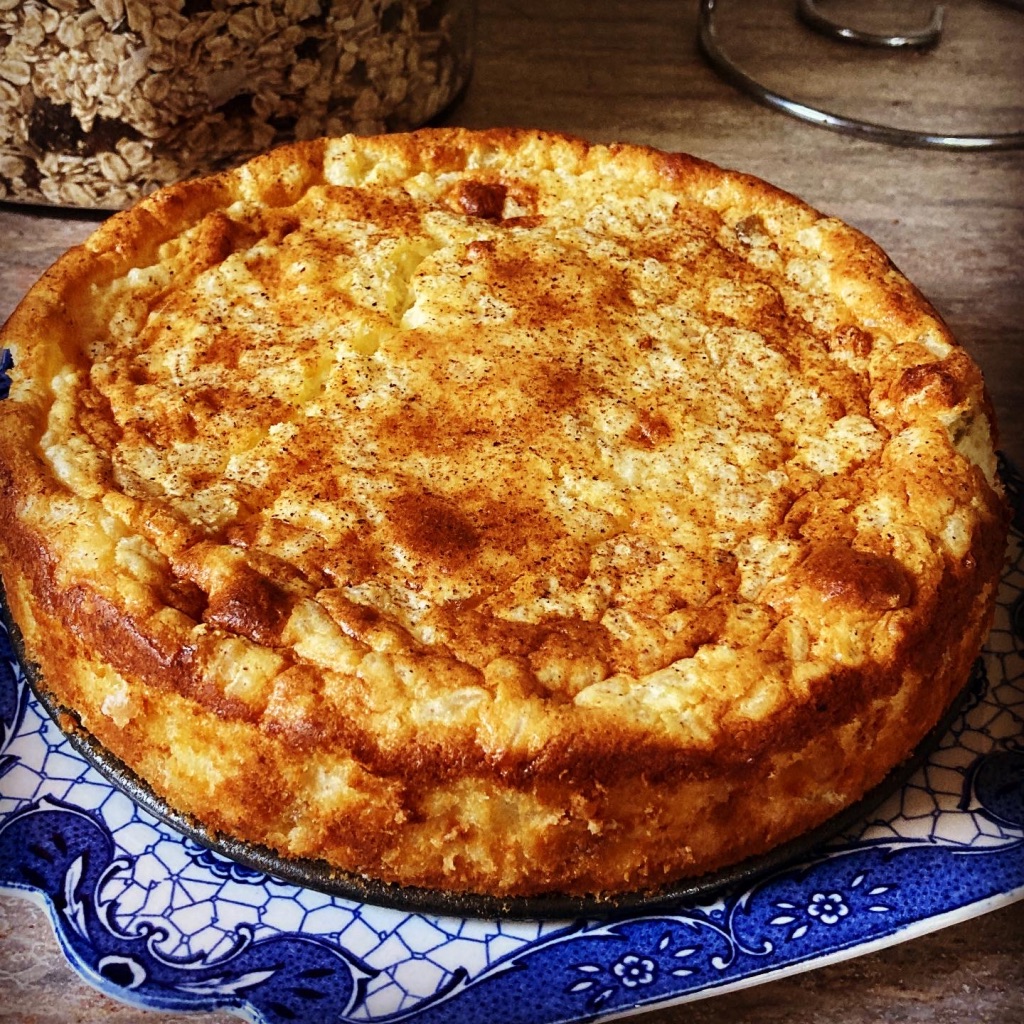
Poets Ranked by Beards by Mahendra Singh
Mahendra Singh, living in Montreal, illustrating and writing books since the 1980s. I’ve done SF, fantasy, humour, kidlit, non-fiction, tech illustration, comics and verse, whatever comes my way. Wherever there is a bookish buck to be made, there you will find me scratching away with dip pen and india ink on vellum, just like those jolly scribes from olden days, the ones who were pillaged by Vikings to be sold into chartered accountacy.
Clients include Firesign Theatre, Feral House, Egmont UK (Minecraft), Penguin/Random House, Gollancz, Abrams (Adventure Time), W.W. Norton, Workman Publishing, NYRB Books, Editions Seghers, Melville House, Fantagraphics, and more.
Mahendra can be found at:
Campsite: @mahendra_singh
When did you know you wanted to become an illustrator?
I was digging ditches for a miserable pittance when I had a teenage epiphany: go to art school and make better money plus meet famous authors and drink on their tab. The first part worked out fine but the second — it turns out that most authors are even more broke than illustrators. And I don’t drink anymore! Already a pattern’s emerging …
How long does it typically take to make a page or cover for a book?
I refuse to be rushed. It takes time to come up with good ideas and first ideas are mostly cliches fit only for clip-art. A good cover or interior full page takes a few days to pencil, ink and colour, it’s the concept that slows one down (or it should). Some pages even take a week to brainstorm and then there’s researching and finding reference, drinking tea, eating properly prepared kebabs and of course, napping. It all takes time, that’s the difference between good art and hack work.
Who were your inspirations when starting out?
Milton Glaser, Heinz Edelmann, Brad Holland. Especially Glaser, my training focussed on the conceptual approach and Glaser was the High Priest of High Concept. How on earth did he find such enlightened clients?
What do you do to overcome a creative block?
I sacrifice a randomly chosen telemarketer to the acidulous tongue of an infuriated Assamese wife, that usually does the trick.
Do you have a favourite piece in your portfolio, if so could you share it and talk about it?
I include some interior illos and the cover for the German re-issue of Cocktails, by D.A. Powell. The cover was inspired by a Max Ernst thing, forget the name. The interiors are about illustrating verse without being so literal that there’s nothing to catch the eye with. Verse forces illustrators to think harder than any other publishing genre.
What was your first book related project?
It was a book about training bloodhounds for police work, lots of doggy pictures. It was a fascinating project.
What type of media do you prefer to work in and why?
Graphite pencils on tissue, pen and ink on Denril or Dura-Lar, both of them synthetic vellums, and everything coloured in Photoshop. For those who care about such things, my crosshatching nibs are the Gillot 1950 and Brause 66. My clear-line nib is the Leonhardt General and the Brause.
Do you have a playlist you like working to? If so do you want to share it?
It depends on the book. When I wrote and illustrated my first novel, American Candide, (Rosarium Press) a looped track of ABBA’s greatest hits lashed me onwards. Fear and loathing are great motivators. Twenty Trillion Leagues Under the Sea by BSFA award winner Adam Roberts (Gollancz) was Bruckner and Wagner, all that water and distance compressed into a tiny submarine demanded full spectrum dominance. The Krishna picture-book I mention below was an unholy mix of American 70s funk and Gustav Holst (especially his Vedic hymns and operas, which are very cool). To sum up, it’s a fiesta inside my head, 24-7.
Do you have any rituals when working?
Superhero underwear makes for a better inking session.
Do you have a favourite artist outside of the world of books, if so who and why?
Where to start? Goya’s war etchings, Leonardo’s equine silverpoints, the caves of Lascaux, Michelangelo’s Laurentian stairs, Henry Moore’s sheep drawings, and so much more, anything that shows a skilled human hand being put to the service of a mind which understands reality. Illustrators who grow up looking at crappy art often make crappy art as adults. Do your eyes a favour and start digging around in our species’ past, not just today.
Did the books you read as a child influence your work?
Yes, and it continues to this day. You can’t be a serious illustrator without reading widely. And it might even help you to become a better human being if you read the right books, or at least a more interesting lunatic.
For me, books are the pinnacle of the illustrator’s profession. They are a revolutionary invention that cannot be improved on, you can load them up with any idea you think you can get away with, then send them out into the world to do that which needs to be done.
One of my recent projects was a kidlit 32-pager, “The Extraordinary Adventures of Little Krishna.” The publishers, Feral House, let me make a children’s book about Hindu metaphysics with a subliminal atheist message, a very sweet gig from a truly enlightened publisher. Blowing young people’s minds with the lunatic beauty of everything human, that’s what they want, hallelujah.
In North America, the indie publishers like Feral House are society’s last defense against total barbarism in the book trade. They, along with Europeans, still grok my work.
Has your illustration/art style changed over time?
I developed a very tight and laborious crosshatching style until it was too much for my eyes, about five years ago. I had to switch to a simpler pen and ink style, called clear-line by the inking illuminati. Sometimes I even do finals in pencil now.
For an illustrator, changing a successful style is risky. But I had no choice and now I’m glad I did it. I can’t use complexity and detail as a crutch anymore, I have to rely more on strong draftsmanship and ideas. A lot of illustrators find a successful style or gimmick and stick to it till the end. How do they endure the boredom of doing the same visual schtick over and over, you might as well work on an assembly line, the pay’s probably better also.
I’m lucky, I can still grow, fashions be damned!
If you could illustrate any classic book which would it be and why?
Illustrating verse is my passion, it fits in perfectly with my lifetime goal of consistent penury since verse pays the worst, if at all. I did a GN version of The Hunting of the Snark (Melville House) plus a German reissue of D.A. Powell’s Cocktails (Luxbooks) and I think those two books are the best things I’ve done so far. So does my wife, another reason to love her.

A collection of English nonsense verse would be nice, Carroll and Lear plus some Bab’s Ballads, or maybe Milton’s Paradise Lost. Either would do, they’re practically the same thing when you look at them professionally.
If you can please tell us about your latest project and if not your last project.
Right now I’m preparing a pitch/sample for a graphic novel version of The Waste Land. When I started this, I thought it would be an easy sell to publishers but I’m not so sure anymore, the business is coarsening rapidly. And it’s taking me forever, illustrating verse always does.
On the other hand, it’s a solid idea and somewhere out there, there’s an editor who’ll get it. I’ve built an entire career on this sort of wishful thinking; when I started out in the 80s getting work as an Indian in North America was a tough proposition, you had to stay positive or starve. I don’t think there were any other South Asian illustrators back then, my name often meant a significant reduction in fees. But that’s thing about the book business, for every Yahoo out there, there’s a sympathetic Houyhnhnm if you just keep at it.













